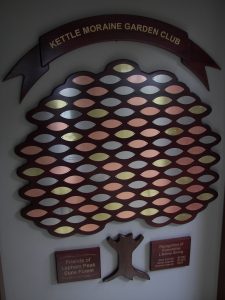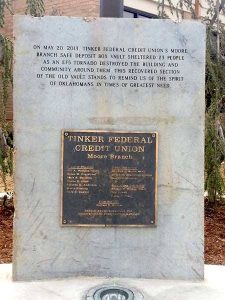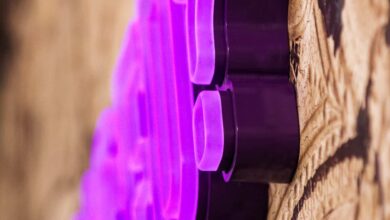Options for Donor Recognition Walls and Plaques
Show appreciation in style with donor recognition walls and plaques
Sometimes a large building, new wing or an entire campus takes many pocketbooks to fund the design and construction, and those who contribute need a little recognition.
A common practice for buildings that receive community support is installing a donor recognition plaque, naming a room after a key donor or donors, or presenting a donor wall. Often decorative and classy, the recognitions can be stationary to recognize a complete list of donors or interchangeable as new donors come on board. They also can come in many materials and choices that range from single nameplates to changing digital interactive displays.
Why Donor Recognition

Donor recognitions are for a single capital campaign, an annual campaign, or a high-end giving society that distinguishes a hierarchy of donors according to the amount given. The displays are intended to thank donors, as well as to serve as marketing pieces for donor relations departments and as tools for drawing future donations.
“Donor walls are pretty personal, prideful pieces to an organization,” says Kelly Sheldon O’Byrne, director of marketing for ASI | Signage Innovations in Iowa, Colorado, Nebraska and Illinois, which offers recognition solutions and signage capabilities. “Organizations have a lot of pride in donor walls because they’re recognizing donors who helped the vision come to life. They want to make sure people are honored in a significant enough way.”
Donor recognition walls and plaques show up in many places where money is raised for new construction, such as healthcare facilities, higher education campuses, community libraries, museums, nonprofit organizations, parks, and churches.
“We receive requests for small donor plaques to recognize a donation to a local park, and we also receive requests for multifaceted alumni heritage walls at universities,” says Ken Auty, sales manager of North America for FusionCast Inc., a metal fabricator in Cambridge, Ontario, Canada. “There are often dedication plaques at new schools, and donor walls are a staple at hospitals to recognize the generous donations of their benefactors.”
Curt Denevan, owner of RCB Donor Recognition in Milwaukee, finds the biggest users of donor displays are hospitals, universities and civic centers.
“Churches and schools are also places where donor recognition is common, but with a lower budget, you might see a roster plaque instead of a custom donor display,” Denevan says. “A hospital may have a single custom donor display, and a university may have a donor display in every building.”
Open vs. Closed Donor Recognition
Donor recognition can be closed or open in how the displays are presented.

A closed display will not have any additional names added once the building or wing is built, the campaign has ended or the plaque or wall is in place, while open displays are ongoing with space for more names. Open displays can reflect annual giving campaigns and be updated each year, or they can show off new donations as they are given. They also can present cumulative or tiers of giving, such as donors moving from bronze to silver or platinum levels. This can be demonstrated with various display options, such as plaques that include smaller plates for additional names and donation amounts and giving trees with branches or leaves to add the information.
Open and closed displays come in many materials or substrates, but cast metal has been a favorite for its timeless look, durability, and longevity, Auty says.
“Casting in bronze, copper or aluminum allows for different looks and finishes to add depth and interest to your donor plaque or wall. Acrylics, cut and etched glass are also very popular,” Auty says.
At A.R.K. Ramos, a family-owned wholesale signage manufacturing company in Oklahoma City, the most popular material for plaques and wall displays is cast bronze for its substantial look, followed by cast aluminum and cast brass, says Rocky Fincher, sales manager.
“You get the gold look instead of silver,” Fincher says. “It makes it look legitimate.”
Ramos’s cast products have the benefit of carrying a lifetime warranty and are easy to maintain and can be cleaned with soap and water, Fincher says.
“It’s not going to fade, crack or chip. It’s not going to fail,” Fincher says.
Popular Substrates
Another substrate used for donor recognitions is an acid-etched display, a less expensive alternative for organizations with small budgets.
Acid-etched displays consist of small, fine etched lines tinted with bronze, brass or another material to have the look of metal, Ramos says. The etching allows for more characters per square inch than does casting-the characters can be as small as one-eighth inch versus one-fourth inch with casting, he says.
Other popular substrates are cast copper, cut metal such as stainless steel, acrylics in multiple types and options, and polished or tinted glass, Auty says, adding that wood is occasionally used, preferably for indoors.
“With a larger budget, you will be able to have a larger selection of options,” Auty says. “When the budget is ‘healthy’ and longevity is a concern, which is usually the case in donor plaques and walls, cast bronze is often the preferred choice with its richness and heritage and durability in the weather.”
For outdoor uses, substrates for donor recognition displays are more limited due to exposure to the weather. The best substrates to use outside include cast bronze, zinc, stainless steel, wood and etched plaques, says Todd Carey, vice-president of sales and marketing for ASI | Signage Innovations. The options for indoors are more extensive, including metal, as well as laminates, acrylic, aluminum, bronze, wood, glass, vinyl, marble, quartz, architectural resin panels and avonite, he says.
Digital Recognition Displays
The indoor and outdoor options are for static recognition systems-another option is to incorporate digital interactive displays into donor walls and displays, providing flexibility and the ability to add names and change categories, Carey says. Screens, such as LED or projection, can be singular or multiple, changing to show different information and allow for continual updates, he says.
Whatever is used, at least with multiple donor recognitions, tying them together is important, Carey says. The recognitions need to coordinate in overall design, color and fonts, and any additions need to match what’s already in place to make the overall look seamless, he says.
“What’s important, from an architectural standpoint, is that donor and signage elements tie together with the architecture of the facility,” Carey says, adding that he sees 50 percent of users ask for the additional rooms, or room sign add-ons. “You may want the dimensional letters to match the font and colors and play off the sign of the main donor wall, for example. It’s that cohesive, comprehensive look and feel.”
The recognitions can include other features, such as a sculpted image of person or building on a plaque, Fincher says. The image often is developed by a sculptor, who begins with clay that is then cast into bronze or another material, he says.
Another feature could be incorporating environmental graphics in large-format printing to provide a backdrop or background to the design for something like a donor wall, Carey says. The graphics can also include a logo, mascot or images of donors,
“Environmental graphics are great for setting a mood for the people that come into that facility,” Sheldon O’Byrne says. “It’s like artwork, and it can be integrated into the design of the facility or donor wall or anything that you want to do.”
The Ordering Process
Following the design process, the timeframe to fill an order depends on the substrates that are selected and the complexity of the project, Auty says. The timeframe from conception to delivery of a donor display could range from two to three weeks up to six months or more for larger projects that include multiple levels of approval, he says.
A typical order from start to finish includes the basic design, material selection, cost quote and budget approval, artwork creation, multiple other approvals, fabrication and final delivery, Auty says.
RCB Donor Recognition works with the client’s design staff to make sure the final results meet the company or agency’s branding standards.
“Once there is general agreement, we can create a concept design. This often will be tweaked by the customer until we have the design just right,” Denevan says. “At this point, we can finalize costs and describe our scope of work.”
An order can be placed, and a final rendering is created and proofed for approval, Denevan says.
The order is then produced through various production techniques, such as traditional metal casting, etched glass, laser cut letters and shapes, and cut acrylic, and the equipment to make the different substrates varies from shop to shop, Auty says.
The sign company or company producing the order works with one or more committees, a foundation, donor relations manager or the marketing department to decide how donors will be recognized and at what levels and dollar amounts, resulting in a consultation type process through to the delivery, Sheldon O’Byrne says.
“The selling process and involvement in donor recognition projects typically is much more than interior plaques or selling exterior signage,” Carey says, adding that the planning and design process, at least for donor walls, takes longer than the actual production. “The most important thing is you get complete approval from the client for every name and make sure they’re spelled correctly. That’s the most important thing before you send it to production. You do not want to upset a donor by misspelling a name.”








